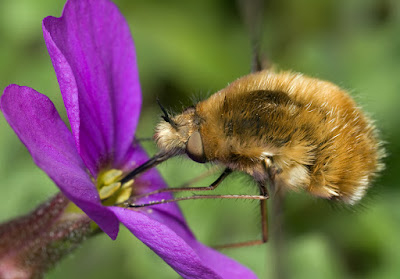A recent study investigated whether the electromagnetic radiation emitted by mobile telecommunication antennas affects the abundance of wild pollinating insects. Additionally, it was investigated whether the effect differs between different types of insects and insects with different nesting behaviors.
The study was located on two Greek islands (Limnos and Lesvos, figure 1) in the north-eastern Aegean Sea. Data-collection was carried out in low scrubland habitat (also called garrigue or phrygana), which is dominant on Limnos and co-dominant on Lesvos, and in olive groves (semi-natural; cultivated for centuries using non-invasive methods) which are co-dominant on Lesvos. Both of these habitat types have been shown to be equally rich in bee diversity and abundance.
On both islands, five mobile telecommunication antennas, in either low scrubland or olive grove habitat, were selected. All antennas used frequency bands between 800 and 2,600 MHz, were located at altitudes below 350 m in diverse flower-rich areas, and were separated by at least 5 km. There were no apparent differences in land management among sites (mostly light grazing by livestock, traditional ploughing of olive groves, and beekeeping).
Figure 1: Study sites on Limnos and Lesvos, Greek islands in the north-eastern Aegean Sea.
Sampling sites were located 50, 100, 200, and 400 m from each antenna. At each sampling site, electromagnetic radiation was measured, and insects were collected during the main flowering period (April, May, and June). Pan traps reflecting different-colored wavelengths of light were used to collect insects during all times of day.
Interestingly, electromagnetic radiation did not negatively-correlate with distance from the antenna, as the spatial structure of the electric field around a base station can be very complex, depending on a number of factors including topography, vertical tilt of the antenna, and emission "lobes". Electromagnetic radiation intensity notably did not differ significantly between the two islands.
Electromagnetic radiation had contrasting effects on abundance for different pollinator groups, affecting some positively, and others negatively (figure 2). Interestingly, when bees with different nesting habits were analyzed separately, abundance of underground-nesting wild bees showed a positive relationship with electromagnetic radiation, while aboveground-nesting wild bees were not affected (figure 3). The positive relationship between electromagnetic radiation and abundance of underground-nesting wild bees was much steeper on Limnos .
Figure 2: Relationships between electromagnetic radiation and insect abundance, for different groups of insects. Where the relationship was viewed as statistically significant, relationships are depicted separately for each island. Note that the y-axis varies between graphs.
Figure 3: Relationships between electromagnetic radiation and wild bee abundance for both Limnos and Lesvos. Trends for underground-nesting wild bees and aboveground-nesting wild bees are depicted separately.
This study was the first to show that electromagnetic radiation emitted by mobile telecommunication antennas affects the abundance and community composition of wild pollinators in natural habitats. Interestingly, the effects of electromagnetic radiation on abundance of pollinators were not always negative. The effects of electromagnetic radiation on insect abundance were consistent between both Limnos and Lesvos for all pollinator groups except for the broad group "remaining flies", which may be due to differences in the composition of the fly community between these two islands.
One possible explanation for these results is the electromagnetic radiation may have particularly devastating effects on the above-ground (thus more-susceptible) larval stages of flower-visiting insects. If so, these larvae that develop above-ground (wasps, many beetles, many hover flies) may be more vulnerable than larvae that develop underground (underground-nesting wild bees), due to higher radiation levels in their immediate environment. Less-impacted groups of wild pollinators may therefore fill vacant niches left by insect populations negatively-impacted by electromagnetic radiation. These changes in pollinator community composition may have important ecological consequences biological diversity and the provision of pollination services.
LINK to Lázaro et al.'s 2016 article in Journal of Insect Conservation.






